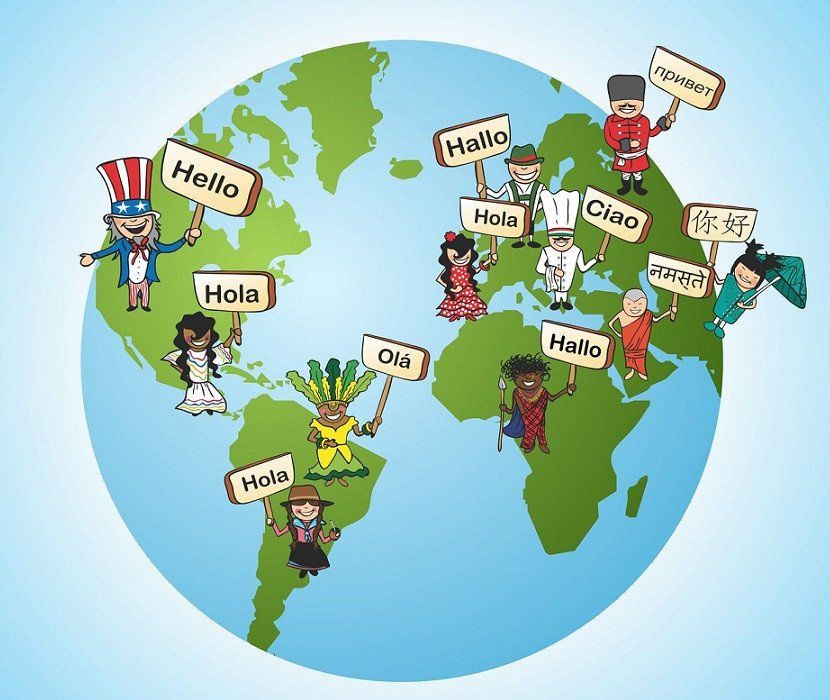Starting Them Young

Raising multilingual children in a linguistically-diverse environment
Being a polyglot child wouldn’t come as a surprise if you had spent your growing years in Malaysia – a melting pot of culture, race and religion, and richly-diverse in languages.
With the national language, Bahasa Malaysia, being made compulsory in government schools, and English being given more attention in the government education system, as well as the languages and dialects of different ethnic groups, it is quite common to hear a Malay taxi driver in Penang asking “Lu ai ki to lok?” (where do you want to go?) or the Indian stall owner in Johor Baru greeting “Ni hao ma?” (How are you?)
Contrary to some common myths surrounding multilingualism, there is nothing to lose and everything to gain by arming oneself with more than one language.
There are over 7,000 languages spoken in the world today; the top three are: Mandarin with 882 mil speakers; Spanish with 325 mil, and English between 312 and 380 mil speakers.
With these numbers, being multilingual definitely opens up a world of opportunities.
Tips to encourage multilinguism
1. Timing
The earlier a child starts, the easier it is for both parents and child, as the child’s brain absorption is akin to a sponge during his/her early years.
According to Christina Bosemark, the founder of the Multilingual Children’s Association in the United States,
Using modern technology, researchers recently found that a baby knows important things about language even before birth and gains fundamental verbal skills long before he utters his first word.
“This construction of the brain’s language chip continues, but at an ever-slowing rate till early teens when the child’s special abilities are completely gone,” Bosemark states.
“Learning a second language is easier for children under 10, and even easier for children under five,” says Barbara Zurer Pearson, author of Raising a Bilingual Child.
The optimal time seems to be from birth to three years, where his mind is still open and flexible. The next best time will be between four and seven years, because they can still process multiple languages on parallel paths. It’s not too late if the child is above seven, as the third best time is from eight till puberty.
2. Family consensus
Among parents and the main caregivers, there should be a unanimous decision and amicable agreement on who speaks what to the child, and that all parties endeavour to stick to it.
It is essential for everyone to be on the same page in order to maximise the benefits to the child.
3. Be realistic
According to Bosemark, it is possible to successfully introduce as many as four languages simultaneously to a child, provided you can offer enough exposure and create the need for each language for at least the first five years of the child’s life.
She suggests that a child needs to be exposed to a language 30% of his/her waking time to actively speak it.
4. Immersion
A good way to introduce a second language is through immersing yourself and your little ones in it.
Going through an immersion environment entails you to listen, absorb and speak that language.
This approach requires the language to be the medium of instruction as well as the object of instruction, enabling language learners to pick up the language in a more natural environment.
For instance, teaching the child a subject (e.g. Mathematics, Science, music, etc) in a second language or continued exposure through books, movies, music and videos help the child develop an understanding and acceptance of that language.
In the Malaysian context, non-Mandarin speaking parents may opt to enrol their child in a Chinese primary school to immerse him/her in a Chinese-speaking environment.
5. Build a support system
Get support from like-minded parents in order to exchange and share both your doubts and your triumphs.
You may also wish to set play dates with other children fluent in the targeted language in order to provide your child with the opportunity to hear, speak and interact in that language.
6. Persevere
It is important to keep a positive attitude towards the learning and use of a second language.
It’s a long term commitment and there will be ups and downs, especially during the initial years and if your child doesn’t speak multiple languages as quickly or adeptly as his/her peers.
When doubt sneaks in, keep pressing on and focus instead on the development of the child’s brain. Always encourage and praise the child for his/her effort in speaking up or attempting to use the second language to express himself/herself.
How to dispel the common myths and scepticism on multilingualism
Multilingualism delays language acquisition
In the past, bilingualism was considered the culprit in problems with language development, but research indicates that bilingualism does not cause delays in either speech or language acquisition.
Even when a child has already been diagnosed with any form of speech delay, raising the child in a bilingual environment won’t delay his/her speech.
Multilingualism creates confusion
“There doesn’t seem to be any limit to the number of sounds a human mind can store at a young age,” explains Francois Thibaut, director of The Language Workshop for Children in New York City.
“Children have an innate ability to tell one language from another. From just days after birth, all infants can tell the difference between many languages,” says Pearson.
“At that young age, infants generally still have trouble telling two very similar languages apart. But by about six months of age, they can do that,” she assures.
Therefore, parents should not be worried about introducing new words of a second language as the child learns to speak a primary language. Rest assured the child has the capacity to pick up more than one language simultaneously.
Raising a multilingual child is certainly an immensely rewarding experience and besides, having the next generation of multilingual children in Malaysia may be the solution to the social integration that we desperately seek.
To engage with Cindy Yap or to send your feedback on this article, email us at editor@leaderonomics.com . To read more articles like this, click HERE.
Personal
This article is published by the editors of Leaderonomics.com with the consent of the guest author.





